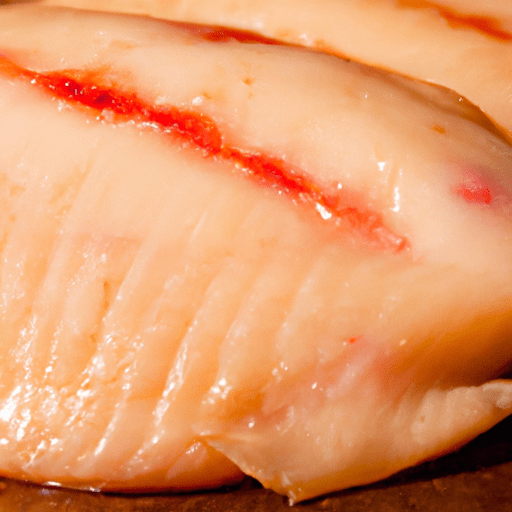Boneless Turkey Breasts: A Delicious and Nutritious Option
If you’re looking for a versatile and lean alternative to the traditional whole turkey, boneless turkey breasts are the way to go. They offer a delicious taste, are easy to cook, and provide numerous options for creating flavorful meals. Whether you’re planning a special holiday feast or simply want a protein-packed dish for your family, boneless turkey breasts are an excellent choice. Let’s dive into the world of boneless turkey breasts and discover why they are so popular in the culinary world.
Taste and Texture
Boneless turkey breasts have a mild and delicate flavor, making them an ideal canvas for incorporating various herbs, spices, and sauces. Their texture is tender and juicy when cooked properly, providing a satisfying bite with every mouthful. The meat’s lean nature ensures that it is not overly fatty, resulting in a healthier alternative to other types of poultry.
Common Uses in Cooking
Boneless turkey breasts can be cooked in a myriad of ways, offering versatility that caters to different culinary preferences. Here are some common cooking methods used to prepare boneless turkey breasts:
Roasting: Roasting boneless turkey breasts in the oven is a popular option, especially during festive occasions. The high heat creates a lovely browned exterior while keeping the meat tender and succulent.
Grilling: Grilling boneless turkey breasts adds a smoky flavor and beautiful grill marks to the meat. It’s a quick and easy way to prepare a delicious meal during the summer months.
Sautéing: Sautéing boneless turkey breasts in a skillet allows you to quickly cook the meat while retaining its moisture. This method is perfect for incorporating turkey into stir-fries, pasta dishes, or even sandwiches.
Stuffing and Rolling: Boneless turkey breasts can be butterflied, stuffed with delicious fillings like herbs, cheese, or even dried fruits, and then rolled before cooking. This technique results in an impressive and visually appealing dish.
Nutritional Value
Boneless turkey breasts are not only tasty but also rich in essential nutrients. They are an excellent source of lean protein, making them a favorite among health-conscious individuals. Additionally, they provide essential vitamins and minerals such as:
- Vitamin B-6: Important for brain health and the production of red blood cells.
- Vitamin B-12: Essential for maintaining healthy nerves and blood cells.
- Zinc: Promotes a strong immune system and assists with wound healing.
- Selenium: Acts as an antioxidant and supports thyroid function.
- Phosphorus: Crucial for bone health and energy metabolism.
Furthermore, boneless turkey breasts are relatively low in calories and fat compared to other meats, making them a nutritious choice for those watching their weight or trying to maintain a balanced diet.
Interesting Facts and History
Did you know that turkey was once considered a luxury food reserved for the elite? During medieval times, Europeans regarded turkey as a delicacy due to its unique flavor and texture. Eventually, it gained popularity and became a staple in many cultures worldwide.
In the United States, turkey is often associated with Thanksgiving, where millions of families gather each year to enjoy a traditional feast. While the whole roasted turkey takes center stage on this holiday, boneless turkey breasts have become a popular alternative because they cook faster and are easier to slice and serve.
In Summary
Boasting a delightful taste, lean nature, and versatility in the kitchen, boneless turkey breasts are a fantastic choice for home cooks and professional chefs alike. Their ability to be transformed into a wide range of dishes, combined with their nutritional value, makes them an excellent addition to any recipe repertoire. Whether you’re hosting a festive gathering, preparing a casual weeknight dinner, or looking for a healthy protein option, boneless turkey breasts are sure to please your taste buds and provide a satisfying meal every time.
So, why not give boneless turkey breasts a try? Get creative, explore different flavors, and enjoy the deliciousness that this versatile cut of meat has to offer!
Boneless Turkey Breasts
Origin: Turkey is a large bird that is native to North America. It was domesticated by Native Americans in prehistoric times and later brought to Europe by Spanish explorers. Today, turkey is widely consumed all over the world.
Common Uses: Boneless turkey breasts are versatile and can be used in various dishes. They are often roasted, grilled, or cooked in a slow cooker. Boneless turkey breasts can be sliced and used in sandwiches, salads, stir-fries, or casseroles. They are also commonly used as a healthier alternative to other meats in dishes such as turkey burgers or turkey meatballs.
Nutritional Benefits: Boneless turkey breasts are a lean source of protein. They are low in fat, particularly saturated fat, and also provide essential vitamins and minerals. Turkey contains niacin, which is important for energy production, and also supplies vitamin B6, which aids in metabolism and nerve function. Additionally, turkey is a good source of selenium, an essential mineral with antioxidant properties.
Unique Properties: Boneless turkey breasts have a mild, slightly sweet flavor and a tender texture when properly cooked. They are known for their lower fat content compared to other cuts of turkey, such as the dark meat found in the legs or wings. Due to the lean nature of boneless turkey breasts, it is important to cook them carefully to avoid dryness, which can be achieved through various brining or marinating techniques.
Historical Significance: Turkey has a long history and cultural significance, particularly in North America. It is a popular centerpiece during festive occasions, such as Thanksgiving in the United States and Christmas in many countries. The turkey has become a symbol of abundance, celebration, and a symbol of gastronomy in many cultures.
These facts provide a brief overview of boneless turkey breasts, including their origin, common uses, nutritional benefits, unique properties, and historical significance.




Use the share button below if you liked it.
It makes me smile, when I see it.